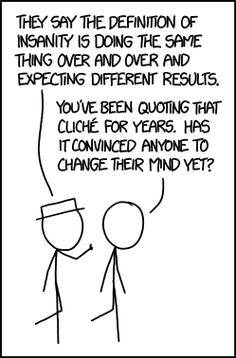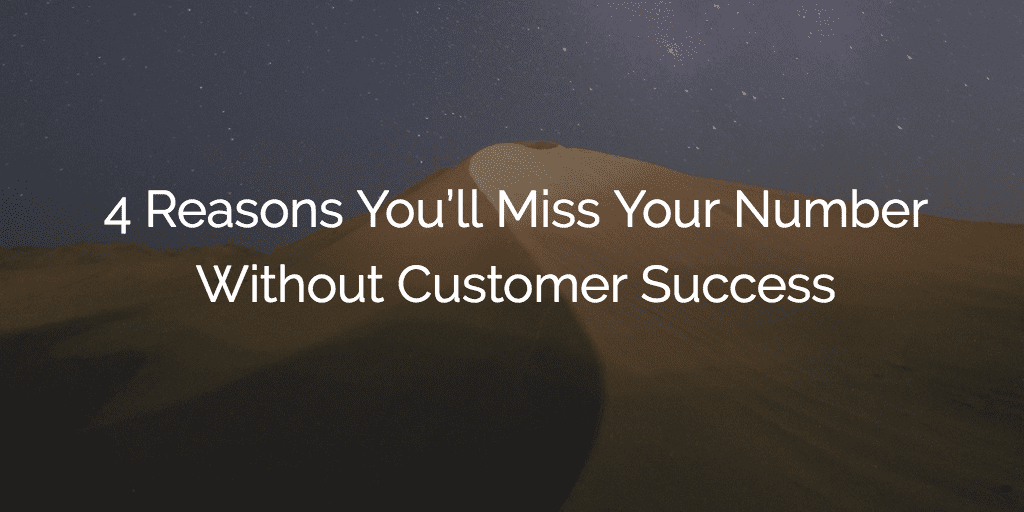If I had a genie, one of the things I would wish for (after more wishes and a Steelers Super Bowl win) is an extra month between the end of our current fiscal year and the start of our next.*
It feels like every year, you go from the stress of closing strong to the new stress of starting from zero again.

And if you’re like me, you stare at the $0 bookings amount on the first day of the new fiscal year and say, “How the heck am I going to make my number?”
If you’ve been around as long as I have, you might feel nostalgic for the “old days” before SaaS. Making the number was still hard then (and dramatic) but the playbook was pretty simple:
- Hire reps
- Ramp reps
- Push reps
- If things fail, blame Marketing!
But all jokes aside, as bizarre as the licensed software world was in some respects, the model was well-understood and could translate from company to company.
And even though we are 15 years into the SaaS/cloud transition, most companies still run sales with an on-premise/license software mindset. Every bookings goal is about more “rep capacity.”

But modern CEOs and sales leaders are noticing the change—and notably seeing the old playbook fail. And in these new SaaS/cloud markets, increasingly companies are missing their sales targets if they use the “old playbook.”

The new playbook for sales is in fact Customer Success, in the sense that the SaaS/cloud businesses that grow fast do so on the back of a business process that drives consistent and strong outcomes for clients. And there are four principal reasons for this:
1. Focused Markets Mean Rep Capacity Models Don’t Work
Remember when you could start a company that sold to “everyone?” Build a database. Sell CRM. Create HR software.
Nowadays, starting a company is so easy to the point that every big market is “carved up” into focused markets:
- Verticalized: CRM for healthcare, HCM for nursing
- Regionalized: Marketing automation for Brazil, supply chain management for China
- Segment-ized: SMB marketing automation for the nursing industry (maybe that’s not a thing yet, but it’s coming!)
As such, you can no longer build a growth model that is purely based upon hiring more reps—there aren’t enough clients to sell to.
2. But Focused Markets Enable Advocacy
But hope isn’t lost. With these smaller, fractured markets, you can take advantage and have above-average economics by leveraging a sales force that is 10 times your size and more than 10x less expensive—namely your clients. Why hire 10 reps when you can “hire” 10,000 happy customers to sell for you? And in focused markets, everyone knows everyone. So make a client happy and when they switch jobs, they bring you along. Screw something up and that will kill 10 new deals for you.
Advocacy isn’t “nice to have,” it’s essential, and it can be operationalized through:
- Clients doing references for you.
- Clients doing reviews for you.
- Clients switching jobs and bringing you in.
- Lower level users that used you coming into a company and saying “that’s a good vendor.”
- And the biggest one—the “backchannel” checks people do through LinkedIn.
In a focused market, if you focus on Customer Success, you will grow fast and efficiently.
3. The Renewals Eventually Get Big
Every CEO and CFO have that moment at some point. They’re looking at the next year financial model, they look at each other, then back to the model and say, “Wow. Our renewal number is bigger than our ‘new’ number.”
Unfortunately, too many companies try to make a diving save on Customer Success at that point and it’s usually too late. It’s funny because that moment is eminently predictable. New sales don’t grow forever, and at some point, customers > prospects.
If you don’t have Customer Success dialed in at that critical moment, you will miss your renewal number and have no hope of hitting your plan.
4. Expansion Is the Only Way to Make the SaaS Model Work
The SaaS financial model is fundamentally brutal. You incur costs upfront and get paid over time. It’s the opposite of the license model, where customers paid you upfront whether or not they used your stuff. Ah—the good ol’ days!
Every SaaS business eventually has to grow up and become profitable. And mathematically, it’s almost impossible to do it purely through new customer acquisition.
You need a high renewal rate to be profitable but you also need to have “cheap growth” in the form of expansion. It’s no surprise that nearly every highly valued public SaaS company has net retention of 110%, 120% or more.
But if you don’t have Customer Success dialed in, good luck asking those clients for more money.
Conclusion
It’s a tough pill to swallow, but the reality of making the number is getting harder every year. Customer Success is becoming an inevitable part of the playbook. For a detailed breakdown on customer-driven revenue growth, take a look at this guide our CCO, Allison Pickens, and I wrote for CROs and other revenue owners.
*We actually got this once when we switched from a 12/31 year end to a 1/31 year end. For one beautiful month, we were in neither fiscal year and all life was glorious. Unfortunately our auditors said we can’t just do that every year!

